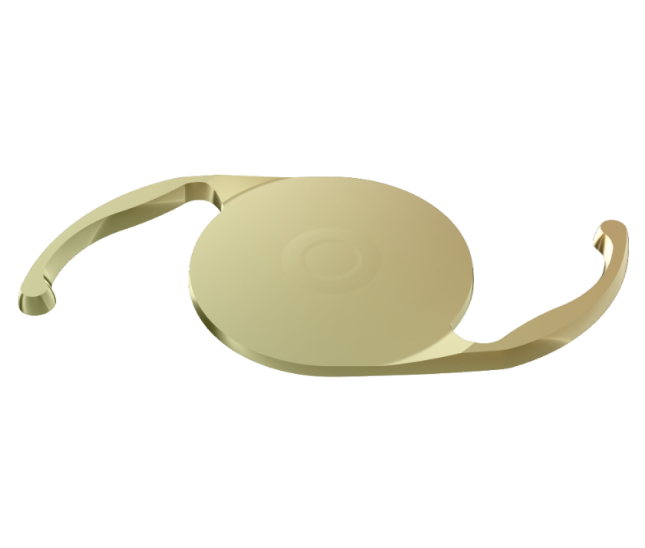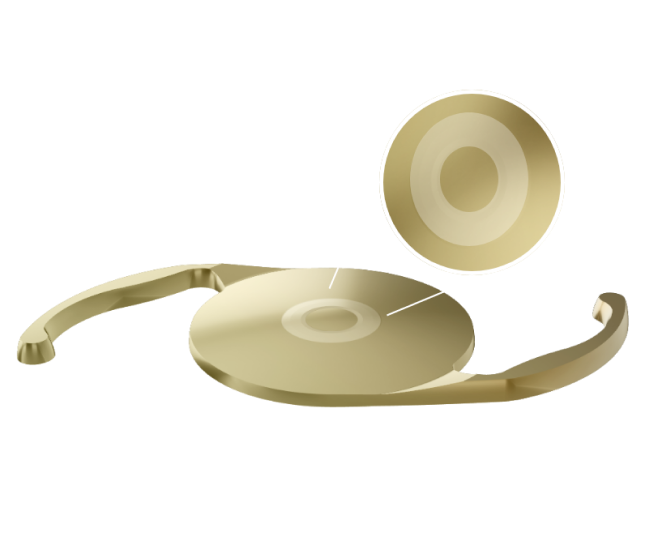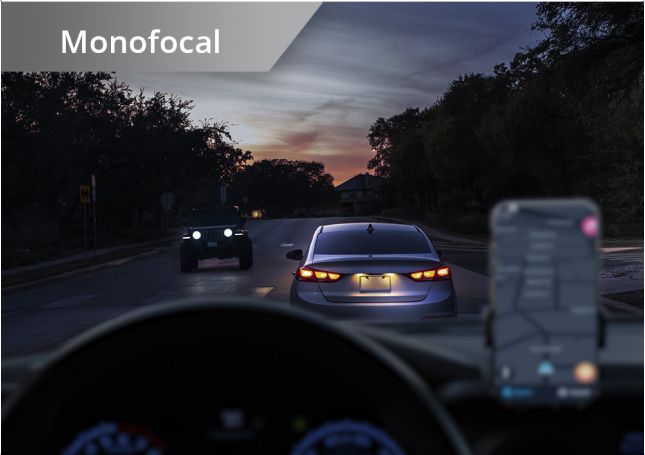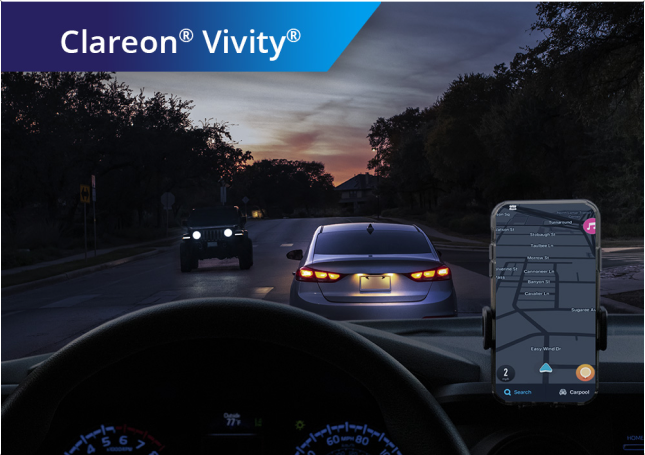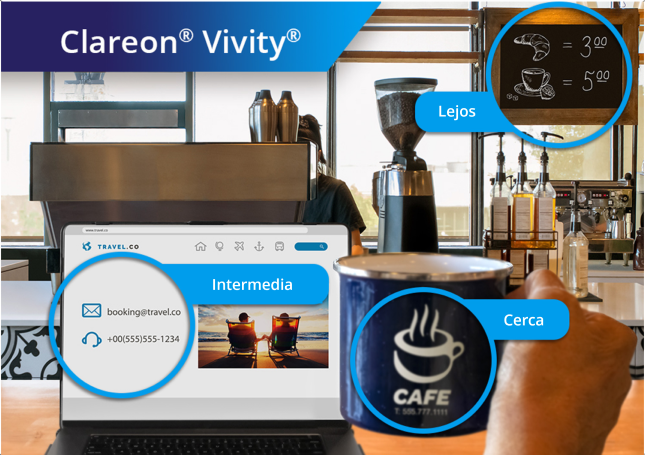LIO Clareon™ Vivity™
Simplificando la Corrección de la Presbicia1-8
Un LIO para la corrección de la presbicia con tecnología de modelado de frente de onda, con una tasa demostrada de disturbios visuales excepcionalmente baja y una claridad insuperable1-4,9
LIO Clareon™ Vivity™
Simplificando la Corrección de la Presbicia1-8
Un LIO para la corrección de la presbicia con tecnología de modelado de frente de onda, con una tasa demostrada de disturbios visuales excepcionalmente baja y una claridad insuperable1-4,9


Clareon™ Vivity™ y AcrySof IQ Vivity™ son óptica y mecánicamente equivalentes

Los LIOs Clareon™ y AcrySof™ tienen el desplazamiento axial más bajo y un casi nulo cambio de potencia dióptrica simulada en comparación con otros LIOs de la competencia10*

Los LIOs Clareon™ entregan uno de los niveles más bajos de opacidad superficial, SSNG y glistenings comparados con otros LIOs9
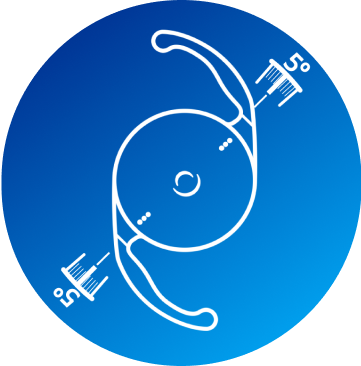
Junto con un desplazamiento axial mínimo, el diseño háptico de Clareon™ al igual que los LIOs AcrySof™ IQ, contribuyen a una alta estabilidad rotacional11

Adicionalmente, Clareon™ y AcrySof™ demuestran tasas similares de Nd:YAG12-14
*Basado en la comparación del desplazamiento axial medio de los LIOs Clareon®, AcrySof®, enVista† MX60, TECNIS† ZCB00 y Vivinex† iSert† XY1 ; n=10 per IOL; p<.005
†Las marcas comerciales son propiedad de sus respectivos propietarios
Clareon™ Vivity™ Simplifica la Corrección de la Presbicia1-8
Clareon™ Vivity™ proporciona el mismo rendimiento excepcional que espera de AcrySof™ IQ Vivity™, disponible en la plataforma de lentes más avanzada de Alcon.
- Un perfil de disturbios visuales comparable a un LIO monofocal1,3,4
- Excelente visión de lejos, a distancia intermedia y una visión de cerca funcional3,4*
- Corrección de la Presbicia con un LIO con tecnología de modelado de frente de onda fácil de usar1-8
- Claridad y estabilidad insuperables en la plataforma de LIOs más avanzada de Alcon hasta la fecha9
*Resultados de un ensayo prospectivo, aleatorizado, de grupos paralelos, enmascarado por el sujeto y el evaluador, con 107 sujetos implantados bilateralmente con el LIO AcrySof IQ Vivity® Extended Vision y 113 con el LIO AcrySof® IQ tras un seguimiento de 6 meses.
†Entre los niveles más bajos de opacidad superficial, SSNG y glistenings de LIO competitivas.
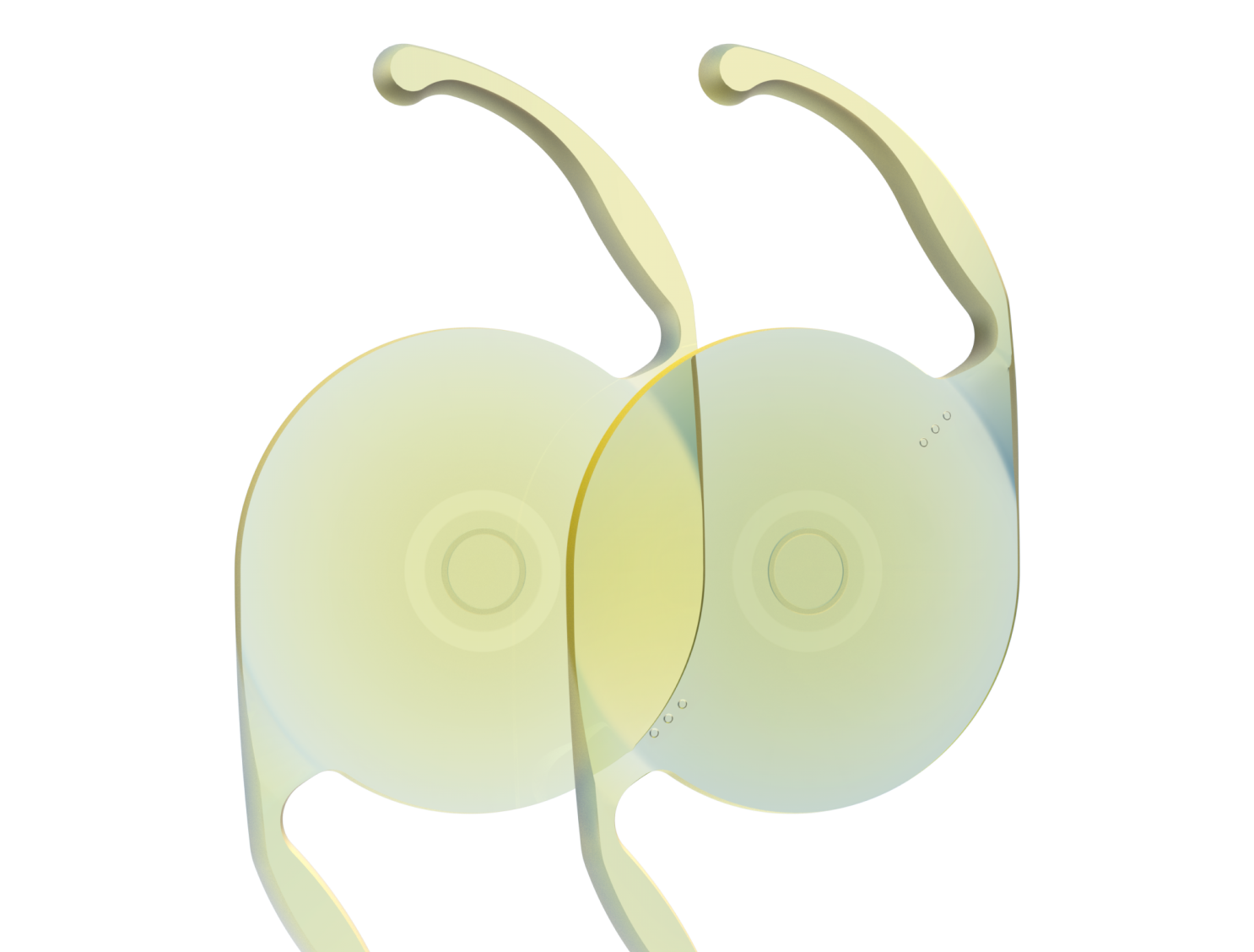
Clareon™ Vivity™ está diseñado para ofrecer una excelente visión de lejos, a distancia intermedia y una visión de cerca funcional como AcrySof™ IQ Vivity™3,4

Visión de lejos de alta calidad comparable a un lente monofocal
Agudeza visual binocular media sin corrección de lejos (4 m)3,4*†
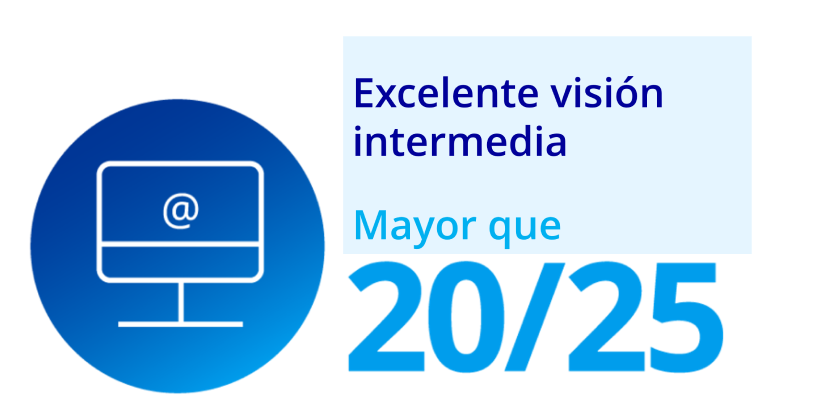
Mejora la agudeza visual intermedia en comparación con un lente monofocal
Agudeza visual binocular media sin corrección a distancia intermedia (66 cm)3,4*†
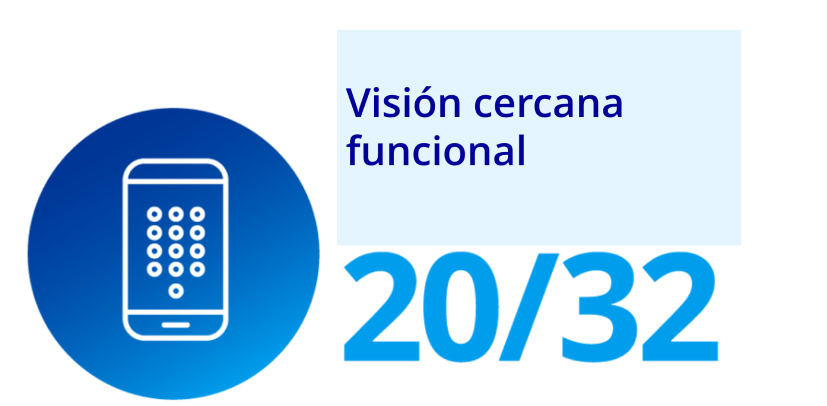
Visión de cerca funcional para actividades diarias de primer plano
Agudeza visual binocular media sin corrección de cerca (40 cm)3,4*†
Resultados de un ensayo prospectivo, aleatorizado, de grupos paralelos, enmascarado por el sujeto y el evaluador, con 107 sujetos implantados bilateralmente con el LIO AcrySof IQ Vivity® Extended Vision y 113 con el LIO AcrySof® IQ tras un seguimiento de 6 meses.
†Snellen VA se convirtió de logMAR VA. Una notación Snellen de 20/20-2 o mejor indica un logMAR VA de 0,04 o mejor, lo que significa que 3 o más de las 5 letras del gráfico ETDRS en la línea se identificaron correctamente.
La curva de desenfoque plana proporciona confianza a la hora de dar con el objetivo refractivo3
Curva de desenfoque corregida a distancia binocular a los 6 meses3*†
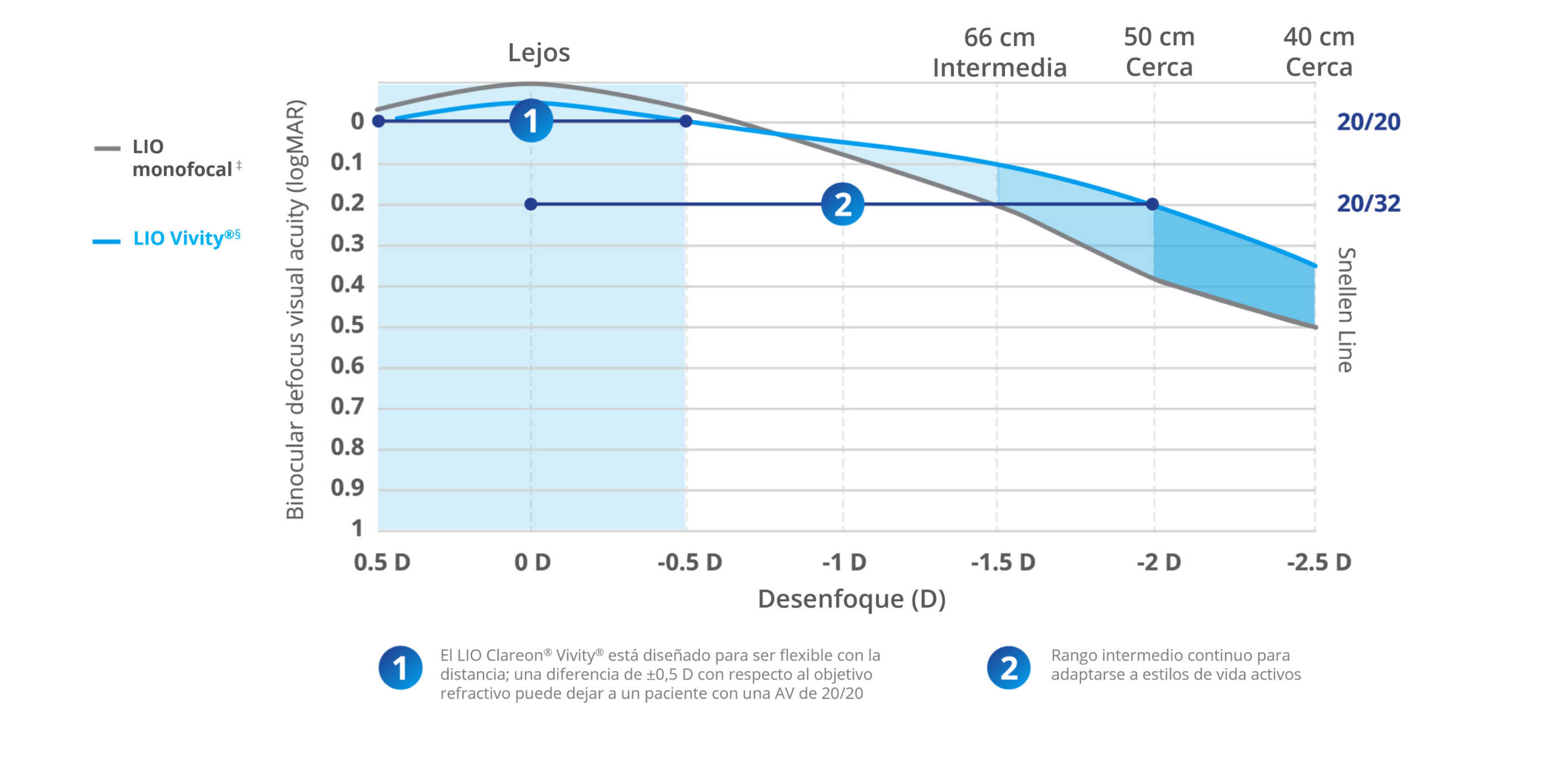
*Resultados obtenidos de un ensayo prospectivo, aleatorizado y controlado de 145 sujetos implantados bilateralmente con el LIO AcrySof IQ Vivity® Extended Vision y 106 con el LIO AcrySof® IQ tras un seguimiento de 6 meses AcrySof® IQ Vivity® and Clareon® Vivity® son ópticamente equivalentes.
‡LIO Monofocal= Modelo SN60WF
§LIO Vivity® = Modelo DFT015
Los pacientes de Vivity™ han declarado tener una visión de lejos con una calidad como la de un lente monofocal, una visión intermedia muy buena y una visión de cerca funcional bajo todas las condiciones de iluminación4
Porcentaje de pacientes que tuvieron una buena o muy buena visión sin anteojos a 6 meses4*†

*Según el cuestionario validado IOLSAT, se preguntó a los pacientes: «¿Qué tan bien has visto sin anteojos en los últimos 7 días?»
†Resultados de un ensayo prospectivo, aleatorizado, de grupos paralelos, con enmascaramiento del sujeto y del evaluador, realizado en 107 sujetos implantados bilateralmente con el LIO AcrySof IQ Vivity® Extended Vision y 113 con el LIO AcrySof® IQ tras un seguimiento de 6 meses.
‡Vivity® LIO: AcrySof IQ Vivity®, modelo DFT015
§LIO monofocal: LIO AcrySof® IQ, modelo SN60WF
Perfil de Disturbios Visuales: Clareon™ Vivity™ tiene un perfil de halos comparable con el LIO monofocal15
Mediciones de los halos en banco óptico: tamaño de la pupila de 4,5 mm15
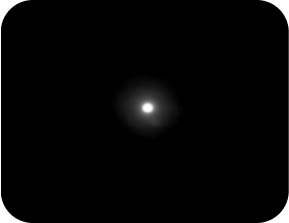

LIO Clareon™
Monofocal
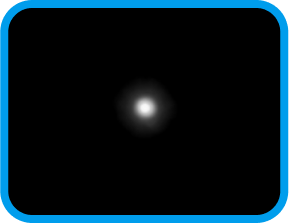

LIO Clareon™
Vivity™
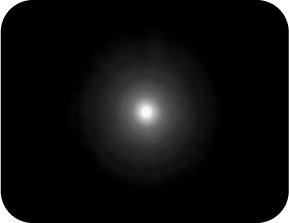

LIO Clareon™
PanOptix™
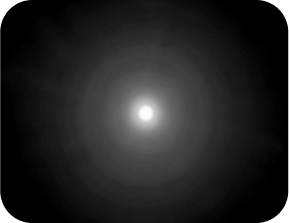

LIO TECNIS
Synergy*
Estas son imágenes representativas de un estudio de laboratorio.
*Las marcas comerciales son propiedad de sus respectivos propietarios
Perfil de Disturbios Visuales: Clareon™ Vivity™ tiene un perfil de halos comparable con el LIO monofocal5,15
Mediciones de los halos en banco óptico: tamaño de la pupila de 4,5 mm5,15


LIO Clareon™
Monofocal


LIO Clareon™
Vivity™
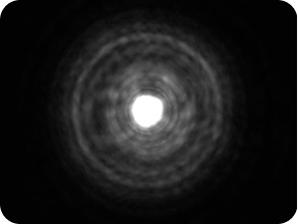

EDoF Difractivo
TECNIS Symfony*
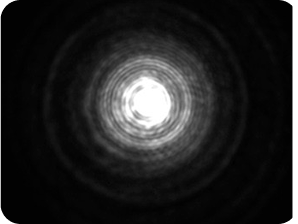

EDoF Difractivo
Zeiss AT LARA*
Estas son imágenes representativas de un estudio de laboratorio.
*Las marcas comerciales son propiedad de sus respectivos propietarios
El perfil de disturbios visuales de Clareon™ Vivity™ es comparable a un monofocal1,3,4
La mayoría de los pacientes con el LIO Vivity™ no han tenido molestias causadas por disturbios visuales1,3,4
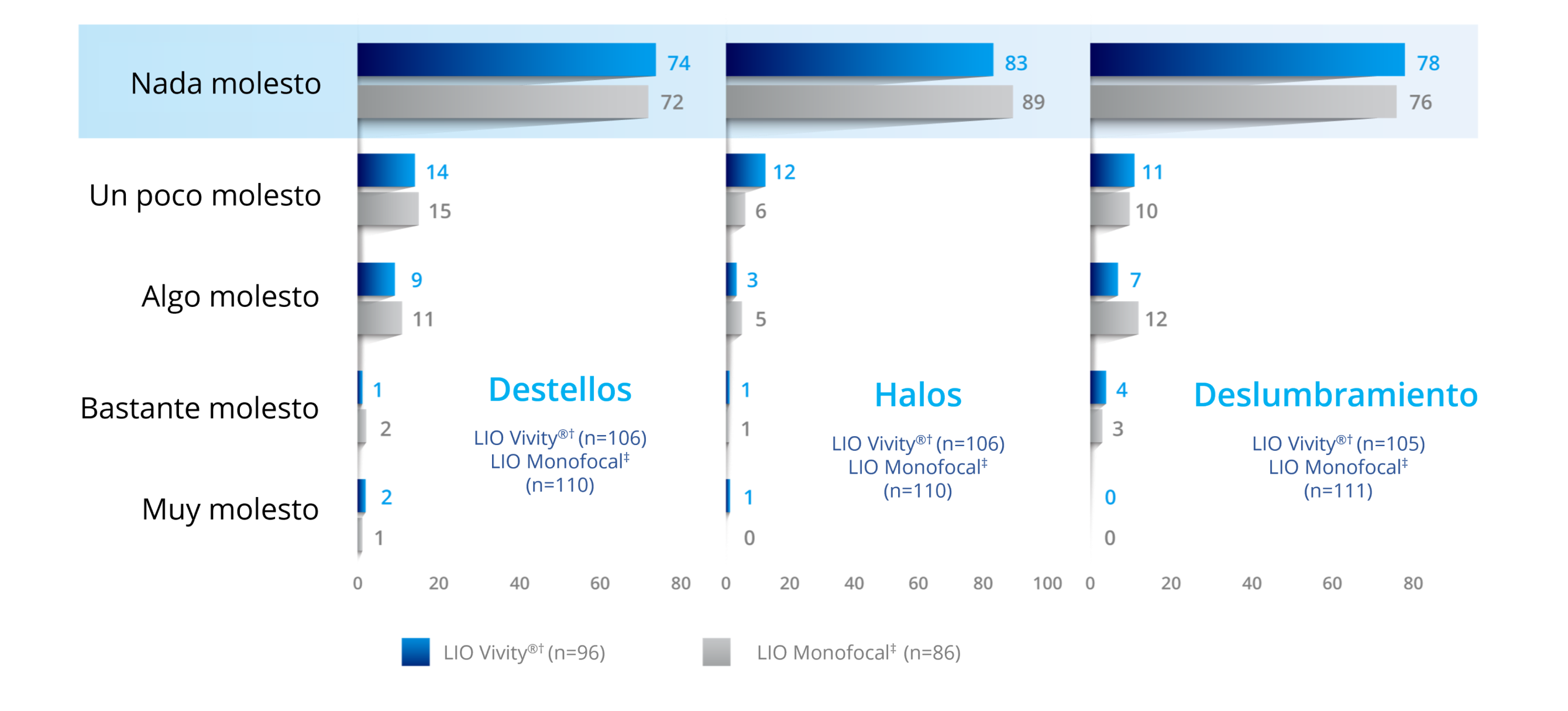
*Resultados de un ensayo prospectivo, aleatorizado, de grupos paralelos, con enmascaramiento del sujeto y del evaluador, realizado en 107 sujetos implantados bilateralmente con AcrySof™ IQ Vivity™ Extended Vision y 113 con el LIO AcrySof™ IQ tras un seguimiento de 6 meses. Los disturbios visuales se evaluaron subjetivamente a través del cuestionario QUVID. Se preguntó a los pacientes: «¿En los últimos 7 días, cuánto le han molestado los destellos, halos o deslumbramientos?».
†LIO Vivity™: AcrySof IQ Vivity™, modelo DFT015.
‡LIO monofocal: LIO AcrySof™ IQ, modelo SN60WF.
El LIO Vivity™ está diseñado para proporcionar un perfil de halos superior en comparación con los lentes EDOF de la competencia16*†

*Los datos provienen de un ensayo prospectivo aleatorizado (1:1:1), controlado, con enmascaramiento del sujeto y del evaluador. DFT015 fue superior a Symfony‡ (~31 % de diferencia; IC del 97,5 %,13,34, 46,79) y AT LARA‡ (~30 % de diferencias; IC del 97,5 %, 12,54, 46,68).
†Se evaluó a AcrySof® IQ Vivity®. AcrySof IQ Vivity® y Clareon Vivity® son ópticamente equivalentes.
‡Las marcas comerciales son propiedad de sus respectivos dueños
Vivity™ está diseñado para tener un bajo impacto en la conducción nocturna16

*Los datos provienen de un ensayo prospectivo aleatorizado (1:1:1), controlado, con enmascaramiento del sujeto y del evaluador. DFT015 fue superior a Symfony‡ (~31 % de diferencia; IC del 97,5 %,13,34, 46,79) y AT LARA‡ (~30 % de diferencias; IC del 97,5 %, 12,54, 46,68). Se le preguntó a los pacientes: «¿Qué dificultad tiene para conducir por la noche debido a su visión?»
†Se evaluó a AcrySof® IQ Vivity® y Clareon Vivity® son ópticamente equivalentes.
‡Las marcas comerciales son propiedad de sus respectivos dueños
Los elementos de transición de superficie afectan a la distribución de la energía de la luz*
El diseño exclusivo Wavefront-Shaping crea un perfil de disturbios visuales como el de un lente monofocal y un rango continuo de visión para los pacientes1-4
El LIO Clareon Vivity™, crea un rango focal continuo extendido en lugar de múltiples puntos focales.17
Tecnología Wavefront-Shaping (X-WAVE™):
Crea un rango focal extendido continuo en lugar de múltiples puntos focales17*
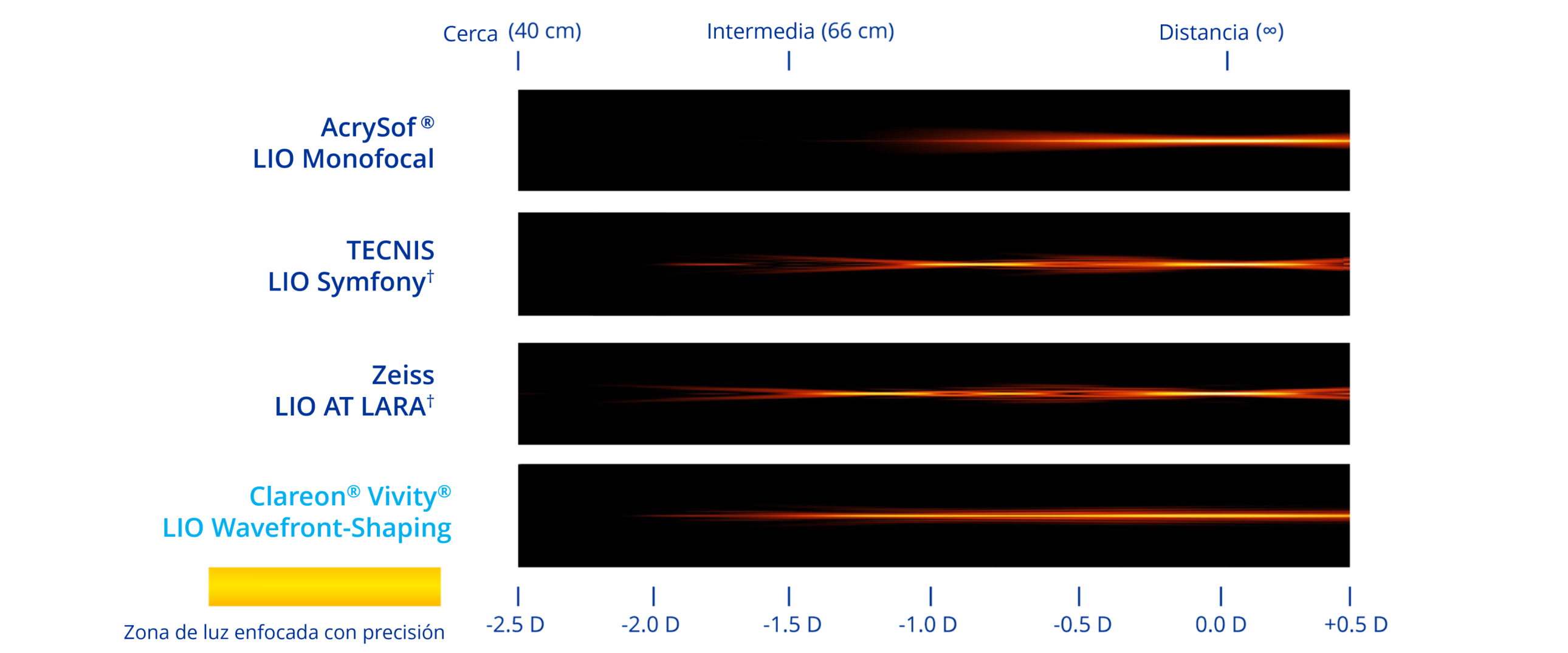
*Función de propagación fotópica simulada a través del punto de enfoque (intensidad de la luz [energía]) – policromático.
†Las marcas comerciales son propiedad de sus propietarios.
Respaldo Clínico
Especificaciones Técnicas
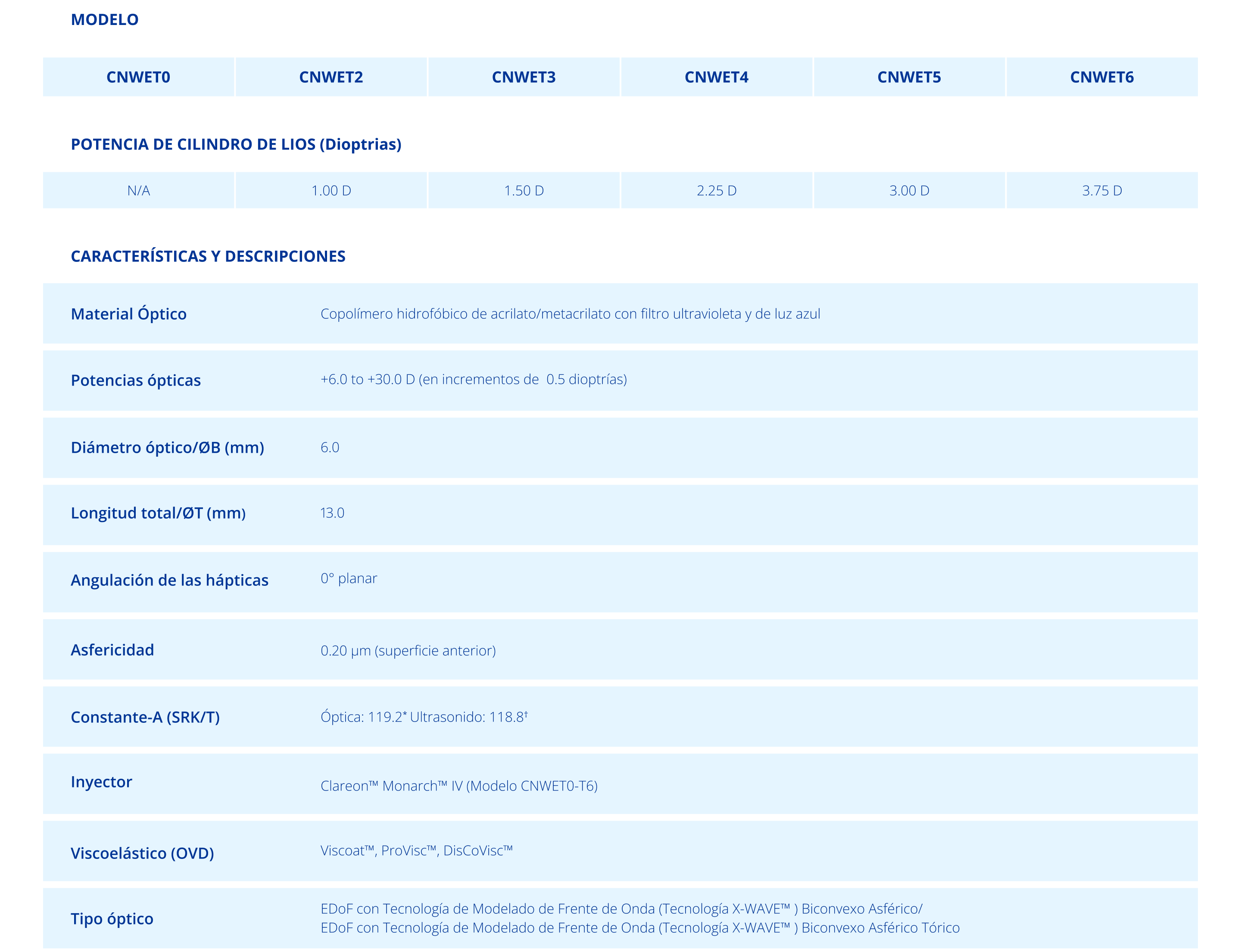
*Clínicamente validado. †Teórico.
Instrucciones de uso (IFU)
Para obtener una lista completa de indicaciones, contraindicaciones y avisos, visite www.ifu.alcon.com y consulte las instrucciones de uso del producto.
Alcon Experience Academy
For relevant training content from industry thought leaders
Referencias:
1. Clareon® Vivity® Extended Vision IOL Directions for Use.
2. Alcon Data on File. US Patent 9968440 B2. 15 May 2018.
3. Bala C, et al. Multi-country clinical outcomes of a new nondiffractive presbyopia-correcting intraocular lens. J Cataract Refract Surg. 2021: Ahead of print. doi:10.1097/j.jcrs.0000000000000712.
4, McCabe C, Berdahl J, Reiser H, et al. Clinical outcomes in a U.S. registration study of a new EDOF intraocular lens with a non-diffractive design. J Cataract Refract Surg. 2022;48(11):1297-1304.
5. Baur I, et al. Visualization of ray propagation through extended depth-of-focus intraocular lenses. Diagnostics 2022, 12, 2667.
6. Ligabue E, et al. ACRYSOF IQ VIVITY: Natural vision at a range of distances provided by a novel optical technology. Cataract & Refractive Surgery Today. April 2020.
7. Lawless M. Insight news. “An IOL to change the cataract surgery paradigm?” available at “https://insightnews.com.au/an-iol-to-change-the-cataract-surgery-paradigm/”. Accessed 17 Jul 2020.
8. Ahmed I, et al. The Vivity Extended Depth of Focus IOL: Our Clinical Experience. Cataract & Refractive Surgery Today. February 2021.
9. Werner L, Thatthamla I, Ong M, et al. Evaluation of clarity characteristics in a new hydrophobic acrylic IOL in comparison to commercially available IOLs. J Cataract Refract Surg. 2019;45(10):1490-1497.
10. Lane S, et al. Evaluation of intraocular lens mechanical stability. J Cataract Refract Surg. 2019;45:501-506.
11. Walters T, et al. Rotational Stability of the Clareon Monofocal Aspheric Hydrophobic Acrylic Intraocular Lens 6 Months After Implantation. Clin Ophthalmol 2022;16:401.
12. Von Tress M et al. A meta-analysis of Nd:YAG capsulotomy rates for two hydrophobic intraocular lens materials. Clin Ophthalmol 2018;12:1125.
13. AcrySof® IQ Aspheric IOL Product Information.
14. Clareon® Monofocal IOL Directions for Use.
15. Alcon Data on File, REP-206331. 2021.
16. Alcon Data on File, ILI875-P001. 2021.
17. Kohnen T, et al. The Novel Optical Design and Clinical Classification of a Wavefront-Shaping Presbyopia-Correcting Intraocular Lens. Clin Ophthalmol. 2023:17 2449–2457.
Clareon Vivity Extended Vision Hydrophobic IOL. Reg.San.: DM28000E, DM29521E. Forma de presentación: caja de cartón (cubierta de polipropileno) conteniendo una bolsa de tyvek/poliéster conteniendo un estuche de polipropileno conteniendo un dispositivo médico. Indicaciones: El LIO Clareon Vivity está destinado a ser utilizado por un cirujano oftalmológico capacitado. El LIO está destinado a colocarse en el saco capsular de la cámara posterior del ojo, sustituyendo al cristalino natural. Esta posición permite que el LIO funcione como medio refractivo en la corrección de la afaquia. La óptica asférica biconvexa compensa la aberración esférica positiva de la córnea en comparación con una óptica esférica estándar. La tecnología patentada X-WAVE™ de conformación del frente de onda en la superficie anterior proporciona un rango de visión ampliado y continuo de lejos a cerca sin aumentar la incidencia de las alteraciones visuales. No se ha establecido el desempeño del cromóforo filtrador de la luz azul para reducir la incidencia de los trastornos de la retina. Principales advertencias: • El LIO Clareon Vivity está destinado a ser implantado únicamente en el saco capsular. • No existen datos clínicos que demuestren su seguridad y desempeño para su colocación en el surco ciliar. • NO vuelva a esterilizar estos lentes intraoculares por ningún método. • NO implante el LIO si la esterilidad ha sido comprometida o si el paquete estéril ha sido abierto involuntariamente antes de su uso. • NO reutilice el LIO. Este dispositivo es para uso de un solo paciente. La reutilización de este dispositivo de un solo uso puede provocar lesiones graves, como la endoftalmitis. Principales precauciones: 1. Antes de la cirugía, se deberá informar a los pacientes potenciales de los posibles riesgos y beneficios asociados a esta LIO, así como de los riesgos y beneficios asociados a la cirugía de catarata. Después de la cirugía, los médicos deberán suministrar un folleto informativo a los pacientes con información sobre la LIO implantada (publicado en www.ifu.alcon.com), conjuntamente con la tarjeta de implante. 2. Como en cualquier intervención quirúrgica, existe un riesgo implícito. Por consiguiente, debe realizarse un seguimiento médico postoperatorio del paciente. Estas son las posibles complicaciones que pueden presentarse en la cirugía de catarata y/o implantación de LIO: daños en los tejidos (prolapso del iris, daños en el iris, daños en el tejido capsular y daños en el endotelio corneal), dispersión pigmentaria, crecimiento en las células epiteliales del cristalino, opacificación capsular posterior, infección (endoftalmitis), reacciones inflamatorias [p. ej., síndrome tóxico del segmento anterior (TASS), hipopión, vitritis, uveítis anterior y membrana ciclítica], desprendimiento de retina, edema macular cistoide, edema corneal, bloqueo pupilar, PIO elevada (transitoria o permanente), hifema, cambios en la sensibilidad al contraste o la percepción del color, distorsiones espaciales, molestias visuales e intervenciones quirúrgicas secundarias. Las intervenciones quirúrgicas secundarias incluyen, entre otras, la recolocación de la lente, la substitución de la lente, la aspiración del vítreo, la iridectomía debido a un bloqueo pupilar, la reparación de la incisión y la reparación de desprendimiento de retina.
Clareon Vivity Toric Extended Vision Hydrophobic IOLs. Reg.San.: DM28078E, DM29135E. Forma de presentación: caja de cartón (cubierta de polipropileno) conteniendo una bolsa de tyvek/poliéster conteniendo un estuche de polipropileno conteniendo un dispositivo médico. Indicaciones: El LIO tórico Clareon Vivity™ está destinado a ser utilizado por un cirujano oftalmológico capacitado. El LIO está destinado a colocarse en el saco capsular de la cámara posterior del ojo, sustituyendo al cristalino natural. Esta posición permite que el lente funcione como medio refractivo en la corrección de la afaquia y del astigmatismo corneal preexistente. Principales Advertencias: • El LIO Clareon Vivity Tórico está destinado a ser implantado únicamente en el saco capsular. No existen datos clínicos que demuestren su seguridad y desempeño para su colocación en el surco ciliar. • NO vuelva a esterilizar estos lentes intraoculares por ningún método. • NO implante el LIO si la esterilidad ha sido comprometida o si el paquete estéril ha sido abierto involuntariamente antes de su uso. • Se recomienda retirar el DVO del ojo al cierre de la cirugía, haciendo hincapié en el espacio entre la cápsula posterior y el cristalino. Esto puede lograrse deprimiendo suavemente la óptica del LIO hacia atrás con la punta de I/A y utilizando técnicas estándar de irrigación/aspiración para retirar el DVO del ojo. Esto debería forzar cualquier DVO atrapado en la parte anterior donde puede ser fácilmente aspirado. El DVO residual puede permitir que el lente gire causando una desalineación del LIO Clareon Vivity Tórico con el eje de colocación previsto. Principales precauciones: • Antes de la cirugía, los posibles pacientes deben ser informados de los posibles riesgos y beneficios asociados a este LIO, así como de los riesgos y beneficios asociados a la cirugía de cataratas. Después de la cirugía, los médicos deben proporcionar a los pacientes un folleto informativo sobre el LIO implantado (ubicado en www.ifu.alcon.com) junto con la tarjeta del implante. • Como en cualquier procedimiento quirúrgico, existe un riesgo. Por lo tanto, el paciente debe tener seguimiento postoperatorio según el criterio médico. Las posibles complicaciones que acompañan a la cirugía de cataratas y/o de implantación de LIO pueden ser las siguientes: visión borrosa o disminuida, glaucoma, refracción postoperatoria inesperada, irritación ocular, daño tisular (prolapso del iris, daño del iris, daño del tejido capsular y daño endotelial de la córnea), dispersión del pigmento, sobrecrecimiento de células epiteliales del cristalino, opacificación capsular posterior, infección (endoftalmitis), reacciones inflamatorias [por ejemplo, síndrome tóxico del segmento anterior (TASS), hipopión, respuesta a la toxicidad, vitritis, uveítis anterior y membrana ciclítica], desprendimiento de retina, edema macular cistoide, edema corneal, descompensación corneal, bloqueo pupilar, elevación de la PIO (transitoria o persistente), hifema, reducción de la sensibilidad al contraste o percepción errónea del color, descentración, inclinación o dislocación del LIO, alteraciones visuales o distorsiones espaciales e intervenciones quirúrgicas secundarias.
Para uso exclusivo del profesional de la salud. Importado y distribuido por Alcon Pharmaceutical del Perú S.A., Lima. RUC: 20212561534 Farmacovigilancia - Tecnovigilancia: Emails y teléfonos de contacto para reportar quejas y/o reclamos eventos e incidentes adversos: Correo: [email protected], Teléfono fijo: 01-615-6800, Opción 2, Teléfono móvil: +51 994 622 938. Disponible las 24 horas, los 365 días del año.

